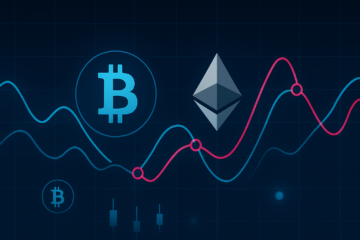Japanese Yen touched a 17-month high of Y107.61 versus the US dollar this Monday. The safe haven currency has rallied more than 10 percent after Bank of Japan’s surprising negative interest rate decision on banks’ excess reserves in late January. Japanese government also sold 10-year bonds with a yield below zero for the first time. With stagnated economy and struggles on delivering inflation target, a strong currency is obviously not what BoJ wants.
Last time BoJ shocked the market was at the Halloween of 2014 when Governor Kuroda decided to accelerate his bonds purchase plan. JPY then depreciated 10 percent within the year. Why this time is different? Investors may be curious about the driving force behind the Yen rally and how further it can go. To answer this, we shall firstly understand why the Japanese currency has the safe haven status. One explanation is the currency carry trade, referring to the strategy of borrowing currency with a low interest rate and purchasing another currency yielding higher interest rate. Since Japan has been in the low interest rate environment from the 90s, investors tend to sell Yen and invest in other currencies such as US Dollar. This pushes down the Yen and hedge funds bet on shorting the Japanese currency. When the risk level of U.S. market rises, investors start selling dollar-denominated assets, buying back Yen to pay back their debts and reversing hedging positions. The movement drives Yen to appreciate when markets become more volatile. This explanation becomes less convincing after the crisis when central banks started competing for lowering interest rates.
The debt-to-GDP ratio of Japan was almost 230% by the end of last year, but one fact being ignored is that Japan is also the world’s top creditor. Based on the latest data released by the Ministry of Finance, Japan’s international investment reached 955,160 billion yen with net position of 348,070 billion yen (around 3.2 trillion dollars) by December 2015. The country is also the second biggest creditor of U.S. government, holding 1.1 trillion dollars treasury securities by this February. When foreign markets underperform, cautious Japanese investors bring their money back home.
One final interesting observation is on the derivatives market: every time market volatilities surge, net long positions on JPY futures tend to increase sharply as well.
Source: Oanda.com
The graph above shows the weekly data of CFTC’s Commitments of Traders (COT), which reflects the net positions for speculative traders on JPY in the U.S. Forex futures market, and open interest of contracts. Investors flipped into long positions in February and March as we can see the surge of net long positions and open interest. Actually, based on one report published by IMF, the appreciation of Yen, unlike some other risk-off currency such as Swiss franc, usually is accompanied by no massive net funds inflow but with significant movements on the derivatives market. This hedging strategy taken by market participants drives the spot rate and could explain the Yen appreciation this year due to the abnormal market turmoil.
In the first speech after the interest rate cut, Haruhiko Kuroda said there was ‘no limit’ to monetary easing. However, market sentiment on a stronger Yen does seem counterintuitive with respect to what is generally written in textbooks. Obviously, in a low and even negative interest rate world, interest rate differentials tend to have less impact on exchange rates. Many people have no clue on how negative interest rates work and even banks need to update their systems on this new innovation. Instead of putting their money into domestic investment, Japanese investors are now searching assets overseas. Data released by the Ministry of Finance shows that foreign long-term debt securities purchases reached record highs in March. The rate cut fails to stimulate investment which is crucial to the economic growth, though foreign investors still favour on holding the Japanese currency as they significantly increased government bonds purchasing in March.
Japanese companies usually price their products in local currencies of target markets. To keep the competitiveness under Yen appreciation, those companies choose not to raise prices. Since productivity is hard to raise in the short term, the only option left is to cut wages. This undoubtedly hurts household consumption and drags the country deeper into deflation, which in turn accelerates the appreciation.
Another penetration point to look at the Yen rally is from the equity market. Here we have done an analysis focusing on the relation between Nikkei225 and USD/JPY.
First, a rough regression is run, having as explained variable the FX exchange, USD/JPY, and as explanatory variable the Japanese equity market. Here the fundamental idea is that the equity market of Japan has a big influence on the movements of its national currency, ignoring for now the simultaneous bias that could arise if it was instead the currency influencing the stock market, but this problem will be dealt with later on.
Linear Model
This model results in a strong significant positive influence of the Nikkei225 on the USD/JPY; to better show this result a plot is shown below including the actual value of USD/JPY and the fitted value that can be obtained using the predicting power derived by the previous linear model with the Nikkei225.
 Source: BSIC
Source: BSIC
It is clear from this chart that the equity market can explain a good part of the movement in the USD/JPY.
Simultaneous Bias
The problem of the simple linear model is that two variables here are endogenous rather than exogenous. In other words, we cannot rule out the effect USD/JPY has on the Nikkei 225. This phenomenon is known as simultaneous bias.
To solve the problem an instrumental variable will be used, which is by assumption very correlated to the Nikkei225 and affects the FX exchange here analyzed only through the effect on the Nikkei 225. In this case, as it is often used in the forecasting industry, a variable matching these prerequisites is just the first lag of the Nikkei225.
Hence, first the Nikkei 225 is regressed on its first lag (first stage regression), then the USD/JPY is regressed on the first lag of Nikkei 225(reduced form regression) and finally the beta of the instrumental variable regression is obtained as a ratio between the beta of the reduced form and the one obtained in the first stage.
Before doing so, we apply the natural logarithm to all our variables and make sure than the first stage is strong enough (as a rule of thumb, a F statistic higher than 10) and that the beta of the reduced form is significant at less than the 0.01 level.
First Stage
Reduced form
Again, the results highlight a strong positive and significant influence of Nikkei225 on USD/JPY, confirming the results of the first model even after having taken into account the possibility of spurious regression and simultaneous equation bias.
In particular we see that a 1% increase in the Nikkei 225 leads to a 0.33% increase in the USD/JPY.
Thus, we do see that a weak equity market pulls up the Yen exchange rate.
There is no clear sign that the Yen rally will reverse any time soon. Kuroda probably has got his bazooka ready but Japanese people and foreign investors are becoming skeptical on how much monetary easing could weigh on the economy. When a weaker currency and inflationary target become difficult to achieve, one question remains: does negative interest rate policy fail or the rates are just not ‘negative’ enough?
[edmc id= 3759]Download as PDF[/edmc]




0 Comments